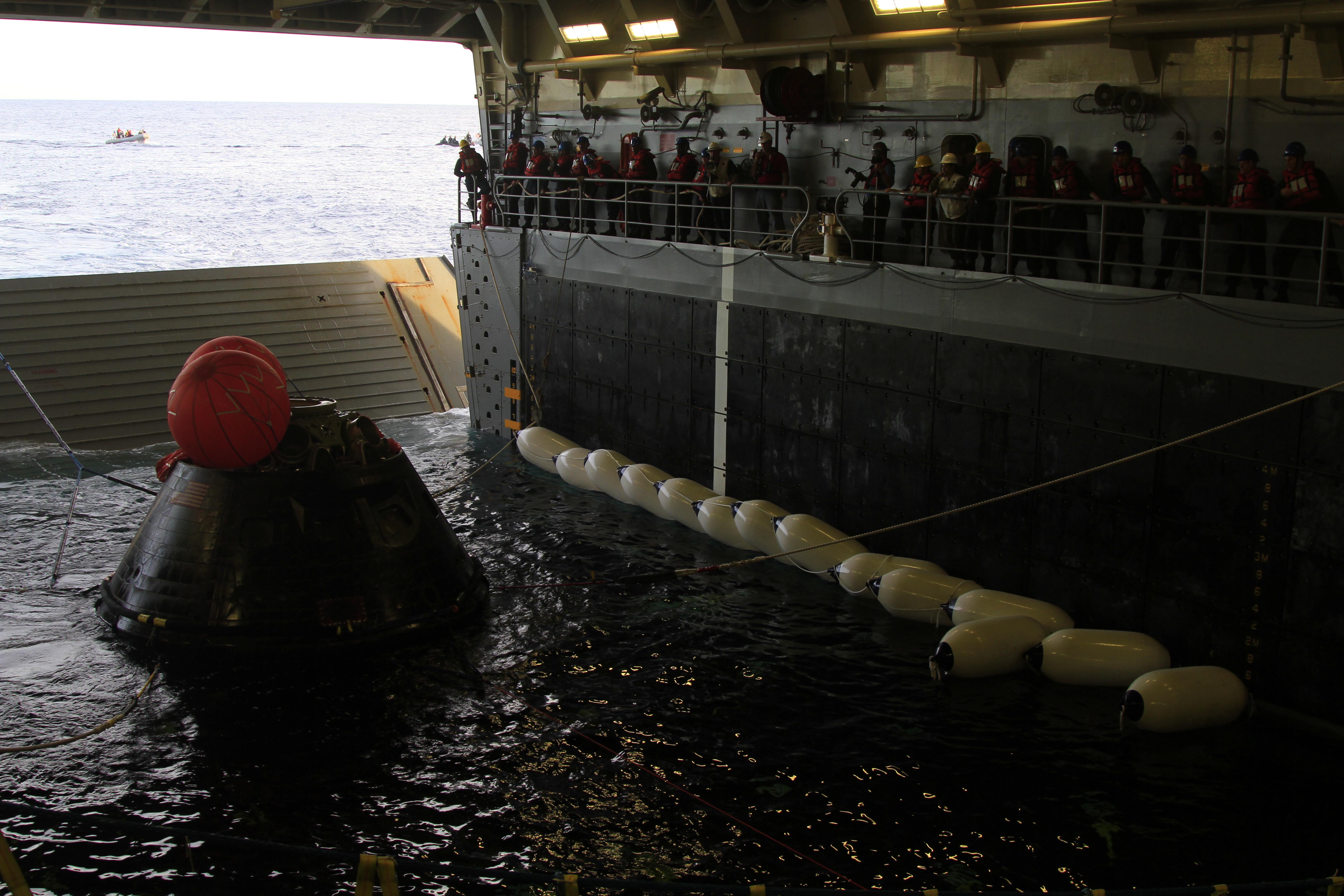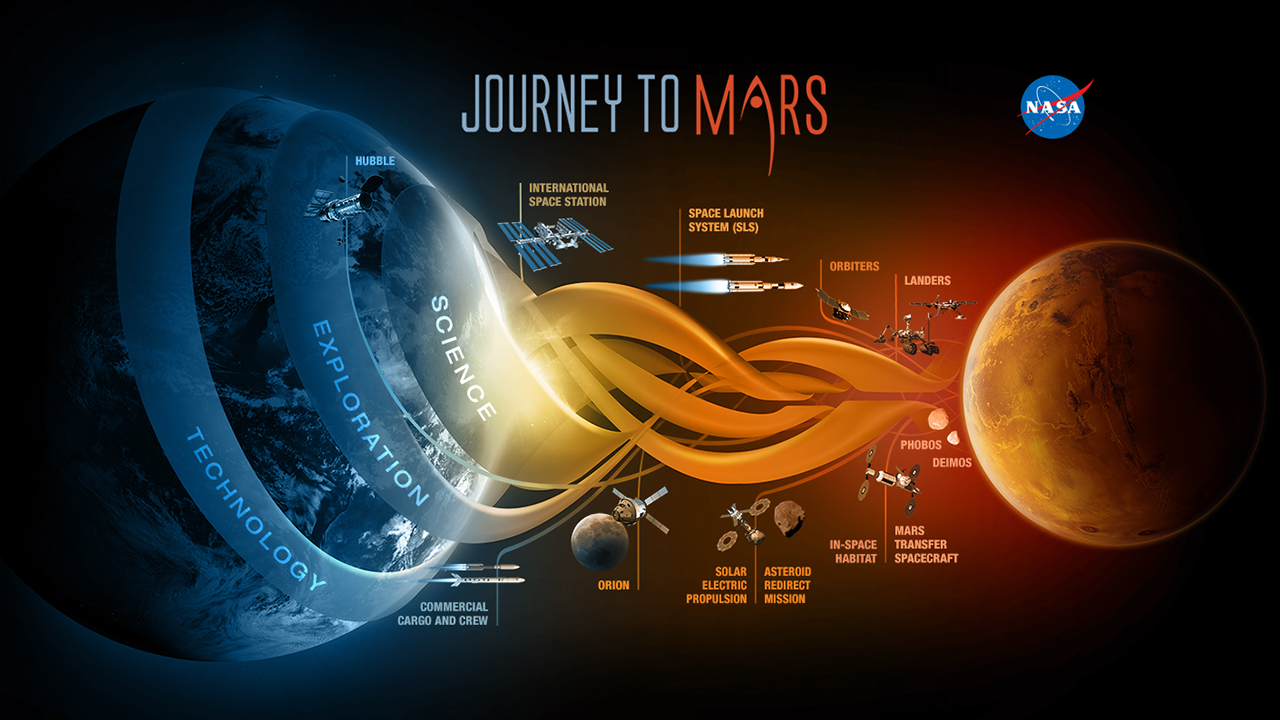
NASA's Orion capsule has come back down to Earth after its first-ever test flight, and the spacecraft will remain on terra firma for a while.
Orion got its first taste of space Friday morning (Dec. 5), zooming 3,600 miles (5,800 kilometers) from Earth, then barreling back into the planet's atmosphere and splashing down safely in the Pacific Ocean. The unmanned, 4.5-hour mission, which NASA calls Exploration Flight Test-1 (EFT-1), was designed to test out Orion's heat shield, avionics and other systems in the space environment.
"We really pushed Orion as much as we could to give us real data that we can use to improve Orion’s design going forward," Orion Program Manager Mark Geyer said in a statement Friday. [See amazing photos from Orion's first test flight]
NASA has big plans for Orion; the space agency says the capsule will one day get astronauts to an asteroid, Mars and perhaps other destinations in deep space. But the first of those manned missions is at least seven years away, and an unmanned Orion won't take flight again until 2017 at the earliest.
Here's a look at what the future holds for Orion, the first human-spaceflight vehicle to go beyond low-Earth orbit since NASA's Apollo capsule, which flew to the moon and back in the late 1960s and early 1970s.
To the moon, and an asteroid
The data gathered during EFT-1 will help engineers tweak and refine Orion in the lead-up to the capsule's next space test, which will take place in late 2017 or 2018.
On that unmanned flight, called Exploration Mission-1 (EM-1), a different Orion capsule — which is currently being built by contractor Lockheed Martin — will cruise around the moon and come back to Earth after spending about a week in deep space. (The spacecraft that flew on Friday will be refurbished for a 2018 test of Orion's launch-abort system, which is designed to get astronauts out of danger in the event of a launch emergency.)
Breaking space news, the latest updates on rocket launches, skywatching events and more!
While EFT-1 used a United Launch Alliance Delta IV Heavy rocket, EM-1 will mark the first test flight of NASA's new Space Launch System megarocket (SLS), which agency officials say will be the most powerful booster ever built.
Then, if all goes according to plan, SLS and Orion will fly together again on Exploration Mission-2 (EM-2), the first crewed flight for both the capsule and the rocket. NASA wants EM-2 to take astronauts out to visit a captured near-Earth asteroid that has been dragged into lunar orbit by a robotic probe.
The details of this "asteroid redirect mission" are still being worked out. The robotic capture craft may snag an entire small asteroid, or pluck a boulder off a much bigger space rock.
EM-2 could blast off as soon as 2021. NASA aims to get people out to the captured asteroid by 2025 at the latest, to meet a directive laid out by President Barack Obama in 2010.

On to Mars
But all of these flights and activities are leading up to something even bigger. NASA officials say Orion will help accomplish the main long-term goal of the global human-spaceflight community: getting astronauts to Mars and back.
In NASA's vision, SLS will blast a crewed Orion toward Mars, ideally by the mid-2030s. The first mission may not touch down on the Red Planet, but putting boots on Mars is definitely in the space agency's plans.
Orion is designed to support astronauts for up to 21 days at a time, and the trip to Mars will likely take about six months. So, any manned Red Planet mission will also feature a habitat module, which will house the astronauts for most of the journey, NASA officials say. (Orion's main job on such long-term trips is to get astronauts into space and safely back to Earth.)
A lot of work needs to be done before NASA will be ready to mount a manned Mars mission. Engineers need to figure out the design of the habitat module, for example, and design a way to get superheavy loads down on the Red Planet's surface. (The 1-ton Curiosity rover, which landed in 2012, maxed out the agency's "sky crane" system.)
But NASA officials are confident that Orion and SLS will be ready to go when the time comes.
"Orion is the exploration spacecraft for NASA, and paired with SLS, we'll go explore the solar system," Geyer said at a news conference before EFT-1.
Follow Mike Wall on Twitter @michaeldwall and Google+. Follow us @Spacedotcom, Facebook or Google+. Originally published on Space.com.
Join our Space Forums to keep talking space on the latest missions, night sky and more! And if you have a news tip, correction or comment, let us know at: community@space.com.

Michael Wall is a Senior Space Writer with Space.com and joined the team in 2010. He primarily covers exoplanets, spaceflight and military space, but has been known to dabble in the space art beat. His book about the search for alien life, "Out There," was published on Nov. 13, 2018. Before becoming a science writer, Michael worked as a herpetologist and wildlife biologist. He has a Ph.D. in evolutionary biology from the University of Sydney, Australia, a bachelor's degree from the University of Arizona, and a graduate certificate in science writing from the University of California, Santa Cruz. To find out what his latest project is, you can follow Michael on Twitter.
